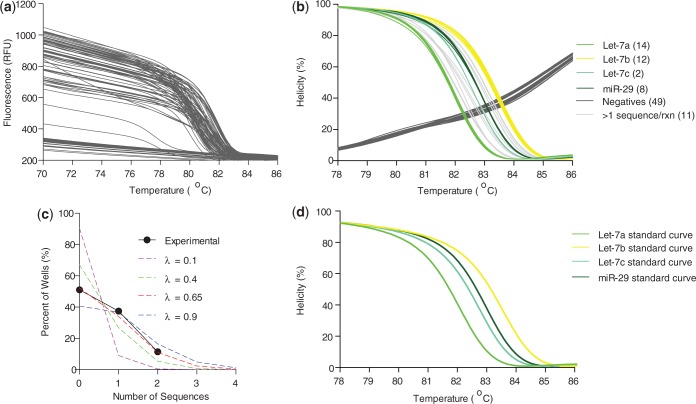Figure 3.
A heterogeneous mixture of Lethal-7 miRNA sequences is resolvable by U-dHRM. (a) Raw dHRM data showing the loss of fluorescence in each well of a 96-well plate across which a dilute mixture of Let-7a, b, c and miR-29 was dispersed. (b) Normalized, temperature calibrated and database matched melt curves show universally amplified, single copy detection of each of the four input miRNA (colored melt curves), detection of wells containing multiple copies of targets (light gray, non-matching curves), and amplification negative wells (dark gray melt curves). The number of copies detected is shown in parentheses next to each legend label. (c) Confirmation of digital detection is accomplished by enumerating and plotting each category of melt curves from graph b and comparing with the expected Poisson distributions. The experimental occupancy matched a Poisson distribution for λ = 0.65 copies/reaction. (d) Database curves used for identification.

